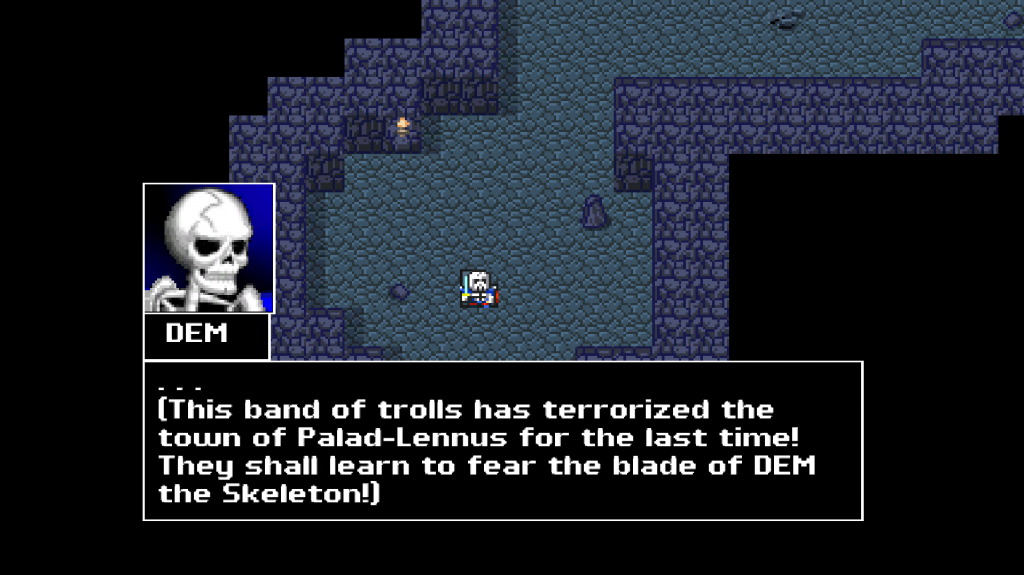Breath of Death VII (Completed) Review
Stuck are we, in a never-ending world in which we are attuned to needing, nay, desiring the next earth-shattering cataclysmic story that we can hop into the hot-seat for and become the heroic fulcrum of universal dependence. We long to be the badass hero, wildly large sword in hand clashing blade-to-blade with our equally met adversary–the cosmos spinning, fluctuating and exploding around us as the whole world watches and points at our every move. We want the innocent, well-endowed child-hood sweetheart to have nothing more than her hero’s arms wrapped tight around her after the colossal apocalypse of all existence is narrowly avoided. In the face of all this–in the face of one grasping gaming company after another, desperately trying to deliver this narrative bigger, better and badder over and over again–I have only one thing to say…
SCREW THAT.
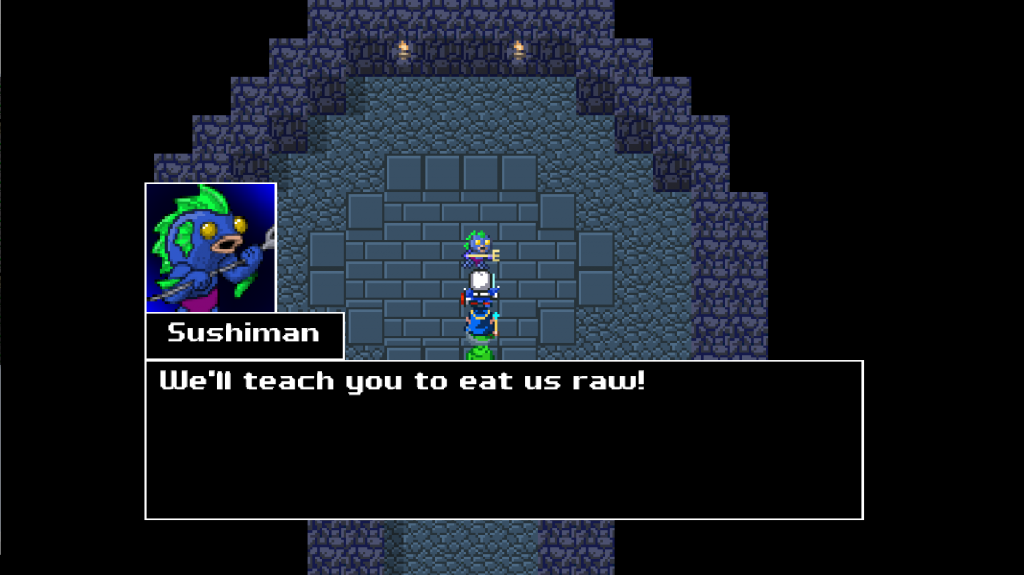
Breath of Death VII is an amazing game, and it has nothing in common with what so many mainstream RPGs have become today.
BoDVII is a tongue-in-cheek parody of RPGs from the NES/SNES era. It features numerous throwbacks to old game concepts, references to many older RPGs and overall captures a whimsical parallel of what it was like to play console games back in the 90’s. Play just a little while and you’ll immediately start picking up the connections. The world was blown up in the year 20XX, a reference to Megaman. The first town in the game has the same layout as the first town in Dragon Warrior–right down to the locked doors requiring the special keys sold in Rimuldar. The game’s world is even divided into sections named after a combination of iconic RPGs’ American and Japanes names. Motherbound references Earthbound/Mother, Lufestopolis references Lufia/Estopolis and very close to the heart of your dear old author Chezni, Palad-Lennus is a reference to Paladin’s Quest/Lennus.
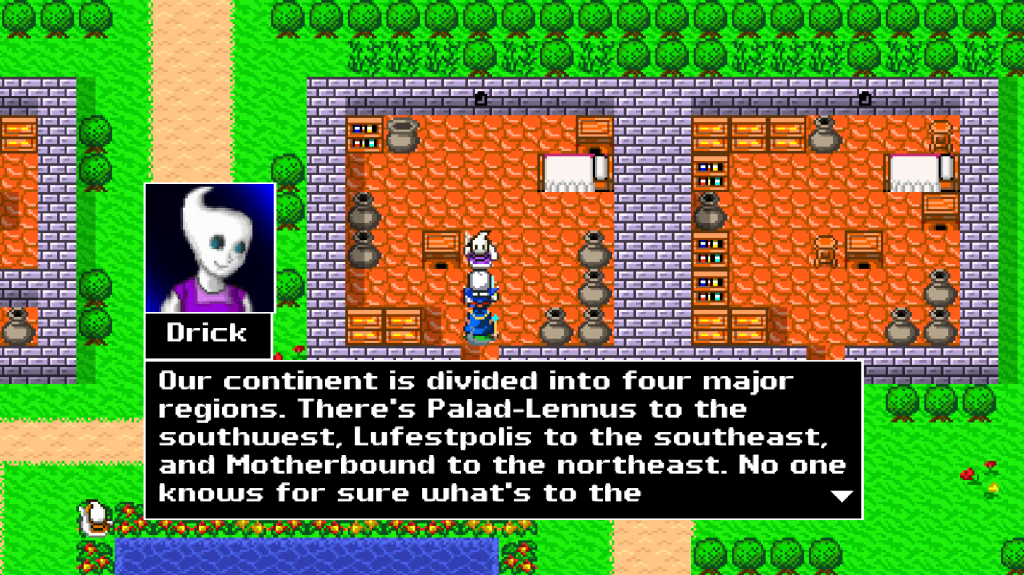
That being said though, let me be clear–this game is not simply a wank-fest that kids from the 90’s can brainlessly herald claiming things like, “This game hearkens back to a time when video games were good,” or “Get off my gaming lawn you casuals, back in my day our games meant something.” BoDVII is actually a lot of fun, even in the modern day era of gaming. It throws just enough of what 90’s RGPs were to put a good taste in your mouth, but knows when to cut back into the modern day of convenience before the taste grows dull or sour.
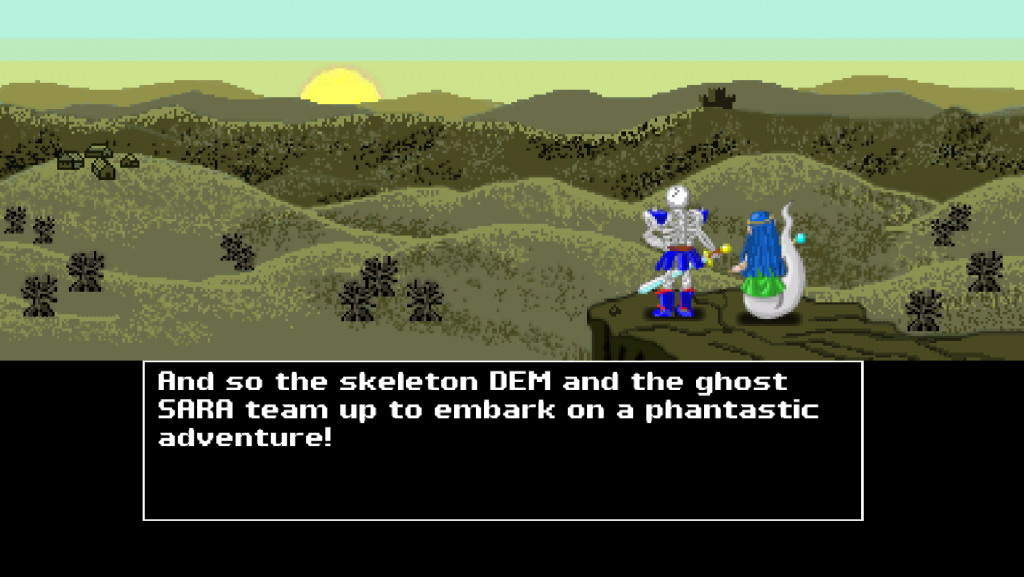
For instance–random battles are plentiful and filled with a variety of sprite-based enemies; this is a necessary feature of a game referencing 90’s RPGs. But lets be real here, eventually old RPGs at some point became an exercise of running around aimlessly, grinding through battle after battle against enemies that were far weaker than you, all the while you hoped to pick up on the next plot point so you could move on with the story. BoDVII avoids this with a simple mechanic. After a certain number of battles are won in each area, the game simply ceases random battles altogether, instead offering you the option to seek combat in the menu, should you wish to fill up your EXP further. Traditional to old tile-based RPGs, you move relatively slowly, one tile at a time. BoDVII mercifully gives you a run button that makes the party book it at quite a fast pace. Most of the time in NES/SNES RPGs, you didn’t have much control over the way a character leveled up–they just filled up their EXP meter and got a set type of stats for it. While this created simplicity and straight-forwardness, sometimes it left you wishing you could tailor your characters a bit more. BoDVII keeps things simple, yet customizable–after every level, you get a choice between two bonuses (two sets of stat boosts or two skills) that can greatly alter the way your characters fight over the course of the game as all the decisions add up. It’s not a complicated skill tree, so it doesn’t take more than 30 seconds to make the choice, but it gives enough customization that you feel like you own the characters.
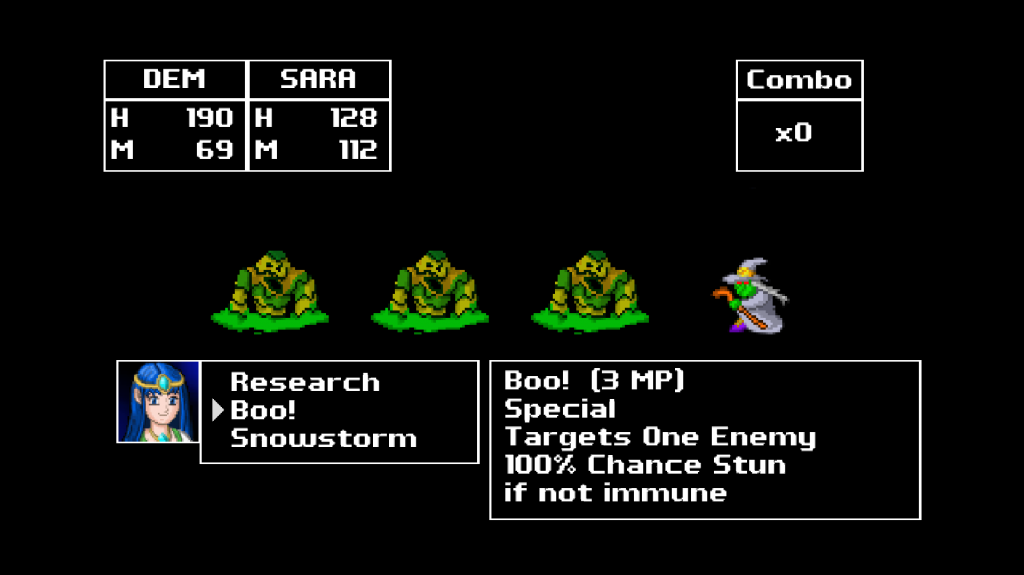
These modern-day conveniences mixed with old-school style creates a really fun game–and I haven’t even touched on the story or characters yet. For the sake of limiting my rant-ability, let me just sum it up like this: characters can be awesome without super HD 40,000 polygonal models, angsty backstories and constant character-built-in drama. The main character of BoDVII is a skeleton. His name is DEM. He can’t talk, because he’s a skeleton. He’s funny, because we can hear his thoughts, but no one else can. He considers himself a hero. I like DEM. It’s that simple, and it doesn’t have to be more complicated than that. Your second party member is Sara. She’s an energetic mage who can read DEM’s thoughts. She often “translates” for DEM, completely changing what DEM is thinking in his head when she relays it to other people. She’s a ghost. That’s awesome. Lita is a freaking techno-vampire with a pension for sunglasses and shotguns. Do I even need to keep going?
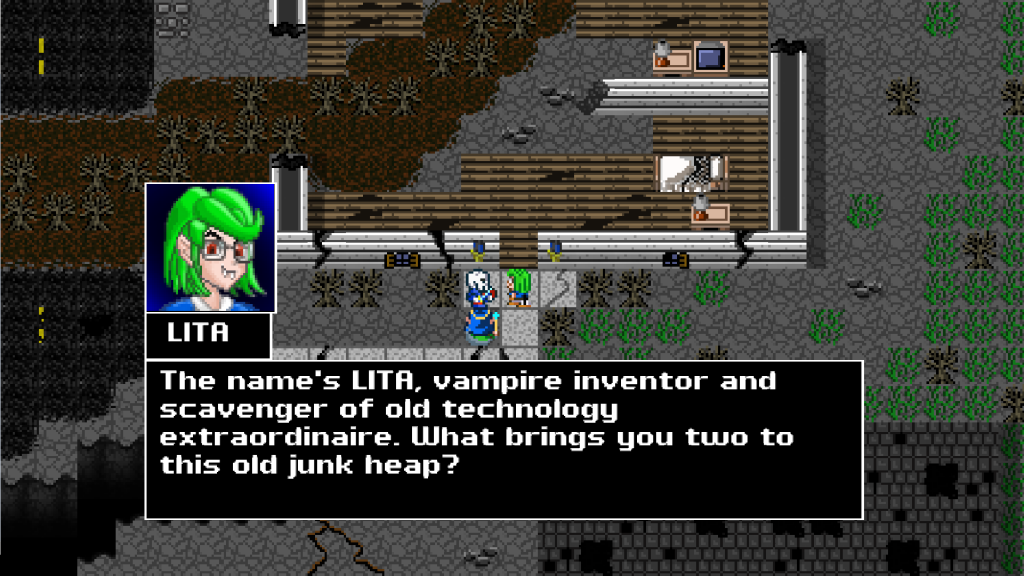
Sometimes a thing can be great, simply because it’s great. It doesn’t need over-complicated drama. It doesn’t need earth-shattering consequences. It doesn’t need another two damn star-crossed lovers who are perfect in every way and fall in love with each other at the end. Sometimes, a thing can be great because it just is–whether it’s made of polygons or pixels. BoDVII is a reminder of this, in addition to being a great parody. I will definitely be finishing this one and as such it belongs in Tier 1.
